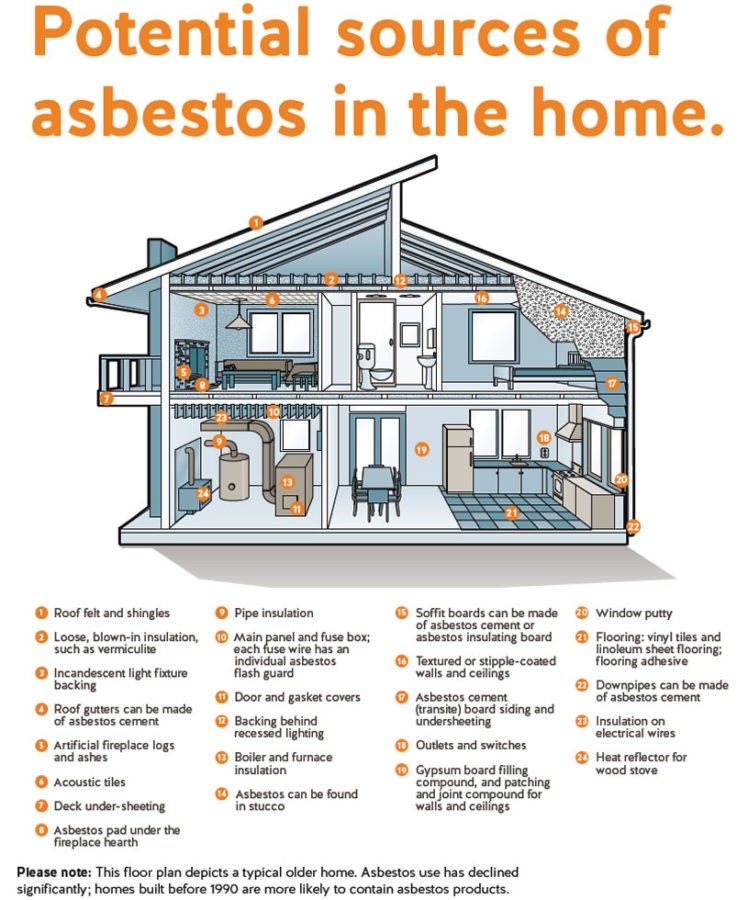Asbestos Awareness – It Could Save Lives
Shedding Light on the Dangers of Asbestos
During the first week of April, many people across the globe come together to help raise awareness on a mineral that has been scientifically proven to cause cancer and other serious illnesses. Global Asbestos Awareness Week is a time where topics such as prevention, the health risks of exposure and banning asbestos get the full attention they deserve.
To date there are at least 58 countries that banned the use of asbestos, Australia being one of them. In observance of this week, I’m going to do my part by sharing information with you on the hidden dangers of this carcinogen.
Segue – A Trip Down Memory Lane
I really wanted to do this because of something that I did – which never should have happened. In my line of work, I hear all sorts of regrets that people have… and if I knew what I know now, I would never have made this mistake. Let me tell you the story.
Once, about 20 odd years ago, I lived in a fabulous house which was built in 1968. In terms of building biology, it was a house of horrors, but I didn’t know anything about that then.
I decided to remove the layers of funky (yes, funky) 1970s wallpaper. Once the layers were off, I discovered that the plasterboard had been installed to provide a rough surface for the wallpaper to stick to. I didn’t want that because I was painting over it. Being an indestructible 20-something, I sanded and sanded and sanded it. Eventually, I gave up and painted anyway. When I was doing my building biology training, it hit me. That was very likely to be asbestos! I don’t know if it was. I don’t yet know if there are any long-term ramifications – but it scares me to realise that I may end up with mesothelioma or asbestosis – or similar; simply as a result of being ignorant.
What is Asbestos?
Known for its heat resistance and durability, asbestos is a microscopic, fibrous mineral found naturally in the environment.
It is these characteristics that made it such a star player in the production of building materials.
Products such as roofing shingles, wallboard, flooring tiles, and insulation were made with asbestos and it was heavily used before the 1970’s.
Australia was one of the highest users of asbestos until there was strong scientific evidence that linked the mineral to serious health concerns.
It wasn’t until the mid-1980’s that our government began implementing a ban on asbestos. The ban covers both imports and exports of asbestos, as well as any use of chrysotile asbestos used in building products.
A Concerning Fact
You may still find asbestos in older homes, so be sure to do some research before getting into any DIY-renovation projects. If you need help on where asbestos could be in your home, take a look here for some advice on what you should do if it is present.
Here are some common places you may find them in your home:
Health Effects
Any amount of exposure could cause serious health risks or environmental sensitivities.
You may wonder: how can I be exposed and what are the health risks of exposure?
If a material that contains asbestos is damaged, it can release tiny particles that contain the asbestos fibre which can easily be inhaled. Since it is such a strong material, our bodies can’t break it down, so the fibres become trapped inside the body to eventually develop tumours.
As mentioned above, asbestos is linked to many serious health effects. One of the strongest correlations is with mesothelioma, an aggressive rare cancer that the only known cause is from exposure to asbestos. The signs and symptoms of this cancer often get confused with lung cancer and asbestosis. Although these other illnesses are caused by asbestos, they are completely different in physical characteristics.
Therefore, it is important when going through the diagnosing stage to specify your family history, your health concerns, and any chance of being exposed to asbestos (like sanding it – note to self).
What can you do to help raise awareness – even your own?
- Remember, asbestos-related illnesses are 100% preventable.
- Stay informed and let others know about this material. To continue to spread awareness, join in on the conversation online or in your community.
- Have your home assessed by a licensed asbestos inspector (I have listed some here).
Here are some simple ways you can get further involved:
- Social media is an important step in raising awareness. Educating your friends and family around the globe by creating a simple tweet or status update could prevent future exposure. #2017GAAW was created in honour of this year’s Global Asbestos Awareness Week led by the Asbestos Disease Awareness Organisation. You can learn what’s being talked about and what other organisations/experts are saying.
- Donate to any organisations of the illnesses mentioned above that would use the funds for research and future treatment options.
TIPS
If you are worried about asbestos in your place, choose an asbestos assessor who has completed the BOHS training. This is the training I did and I can vouch for the high level of this training.
Also, get a “demolition survey” if you are planning any renovations.
You will also find some great information here.
If you would like to discuss your situation with me, get in touch.
#asbestos #mesothelioma #hiddenhazards #2017GAAW

